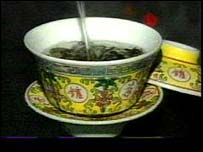This may seem a little odd to you, after all, I have been competing in triathlon for a few years now, been to two world championships, one European championships, of COURSE I am a triathlete, you are thinking? Well, let me explain.
This thought has been gradually rammed into my brain, in part; started by my coach, Steve Casson, keeps telling me I must stop looking at things in individual parts, see the bigger picture. Nope I was not interested. I was comparing my run splits with runners, my bike splits with cyclists, and my swim splits with swimmers. Then I listened to what Brett Sutton had to say in his interview, then I noticed a few things, then I put all the pieces together.
The signs
· I recently joined a new health centre, Waendel leisure centre. I now share a public pool with lots of others. There are lane swim slots, but it’s always busy, and I am not always the fastest one in the fast lane, like I used to be in the much quieter private gym I used to be a member of. I am regularly out-swum by youngsters, and the pool is shared with the local masters swim club on 2 of my lane swim sessions. They too are all usually quicker. BUT – at my first swim squad (predominantly for triathletes), run by my coach, I was much faster than many others, much to my surprise, considering my new local pool experiences. · I was out cycling hills on Saturday morning, I was feeling great, it was the first time out for a long time (weather is to blame!) and I was going well. Then, it happened: a group of cyclists, from the local cycling club motored by, saying ‘hello’ bright and breezy as they effortlessly floated past. What was I doing wrong, I wondered, and why were they all able to effortlessly go SO much faster?
· My running club is a member of the local Three Counties Cross Country League. I ran all the races this year, as I did last. I don’t really mind how I do, I love cross country, and think it is great fun, to be honest, I like the club group thing, which we don’t get much when triathlon race season starts, and everyone goes off in their own direction. However, it is duly noted at the back of my mind, that a good friend of mine, who has NEVER beaten me in a triathlon (and boy has she tried!) came in at each race a long long way in front of me. Results wise, in cross country I am in fact distinctly average! Also, a triathlon friend of mine recently complained that she used to be a very good cross country runner, but has slipped down the rankings since she has taken up triathlon (and she too competes for GB, placing even higher than me usually!)
What does this all mean?
I am not a cyclist, that much is clear. People who dedicate their spare time to cycling are much faster than me, but, when part of a triathlon, my cycle split is usually pretty good, compared to my peers. I am also not a swimmer. Swimming is by far my best discipline, but when pitched aside masters swimmers and juniors from swim clubs, I am slow. When put against triathletes, though, I am pretty quick (usually!)
Therefore, I am a triathlete. Some lucky people, (there are quite a few in my club I could mention!) are able to say they are a runner and a triathlete, for example, or perhaps a cyclist and a triathlete or maybe they are even all 4. These people are probably medal winners, perhaps in all the disciplines and also in triathlon. I, however, am a triathlete.
I train hard, in all three disciplines, and when I stick them all together in a race, I do pretty well. I am a triathlete. Not a runner, a swimmer, or a cyclist (although I do a little bit of each of those too), I am definitely a triathlete.
Why am I a triathlete?
The approach is all different.
You can’t train triathletes like swimmers. It will affect the way they run. Test training theories out on slower athletes first. E.g. 4 anaerobic sessions a week, one in each sport, DOES NOT WORK! Brett Sutton I split my time between three disciplines. They carefully interweave, in my typical training week, so that I can fit some elements of base, tempo, technique and speed into all 3 disciplines, as well as do strength work. This is a carefully plotted thing, and my run coach has come to realise himself that there is a very distinct difference between a runner and a triathlete. I am the first triathlete he has coached. He has come to learn that the run is just an element, admittedly, an important one, but still only an element. He cannot push me to the limits that he pushes his other runners to, because likelihood is that I will have something else to do later on, or tomorrow, and breaking me is not conducive to building a good all round triathlete. In a few weeks, he will learn what bricks are, and how running off the bike is an important training element. I doubt any of his other runners have to worry about this either.
Take Philip Graves as an example. He is an outstanding cyclist, but is I would say, still working on finding the balance and skills needed to be a good, balanced, consistent, top level triathlete.
Triathlon is different, and that is why I love it.
I am a triathlete, and proud of it.
 Do I use just myself? or a range of people?
Do I use just myself? or a range of people? 




